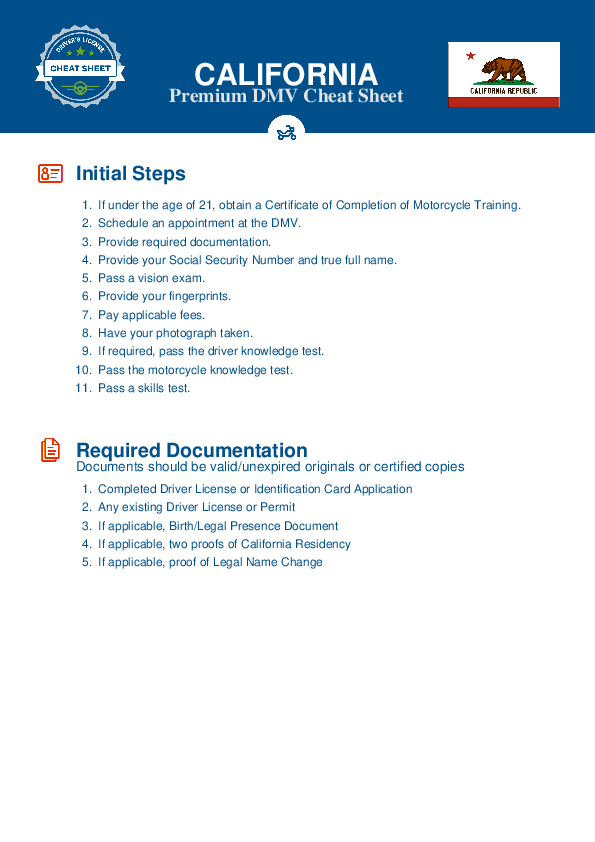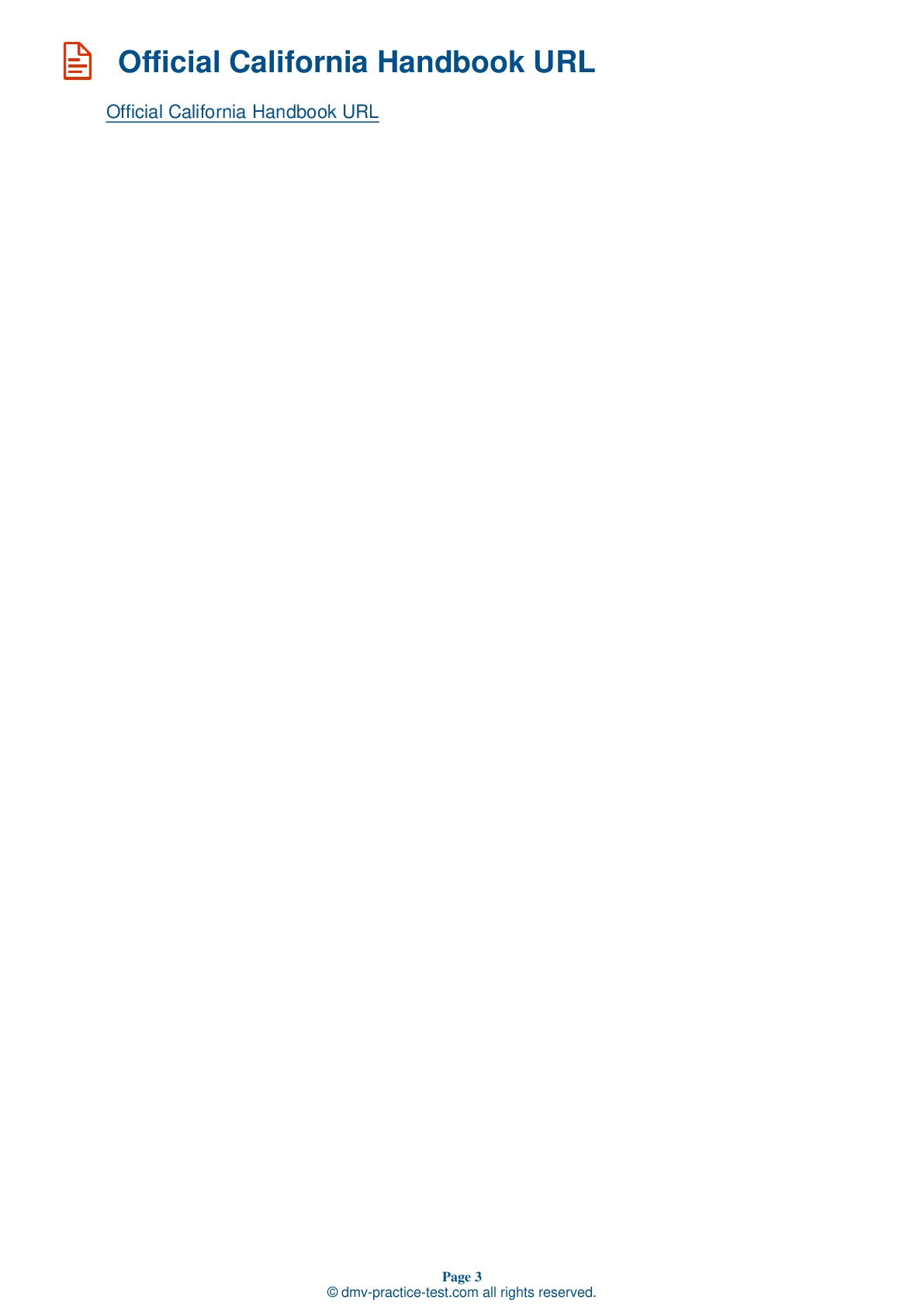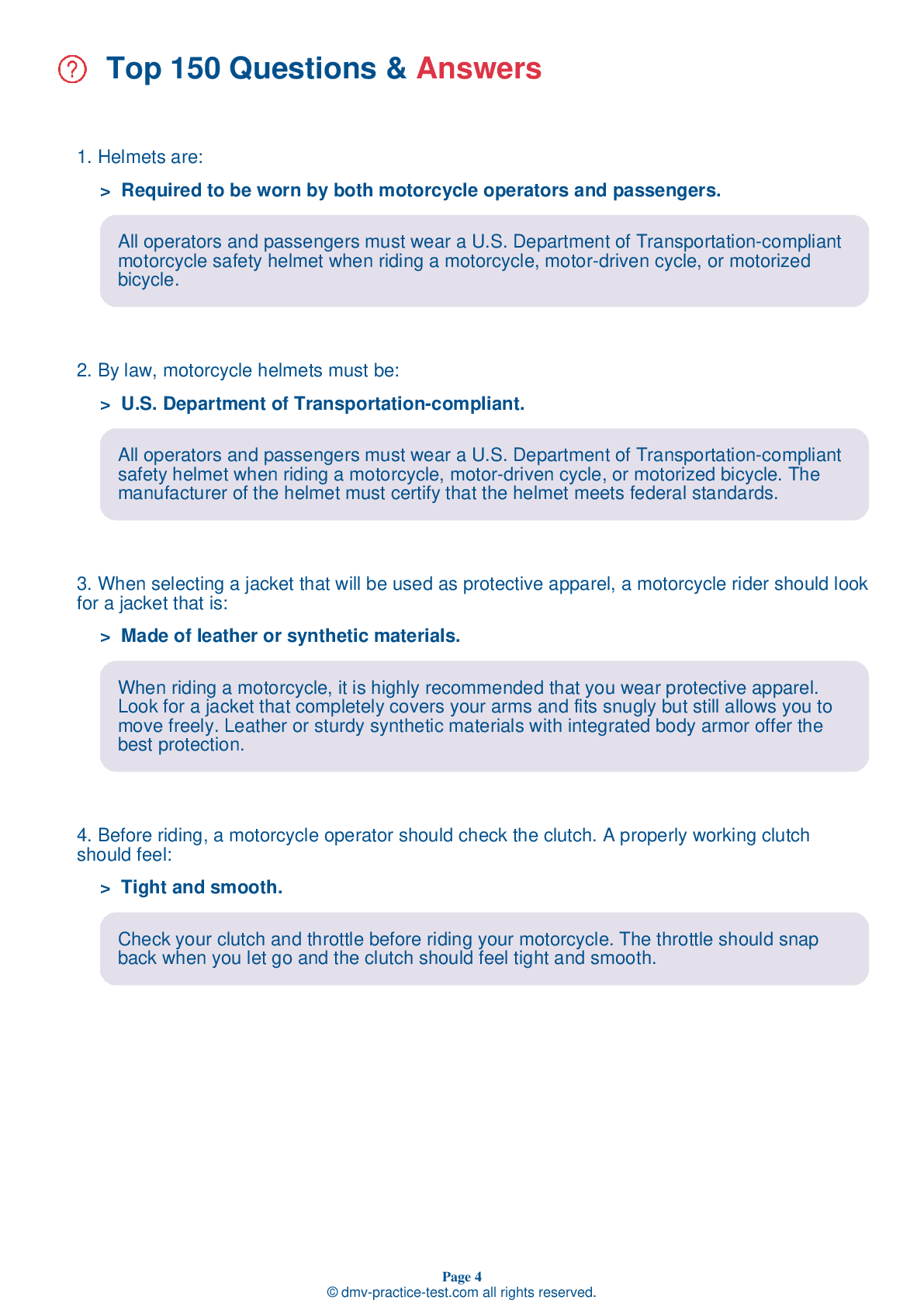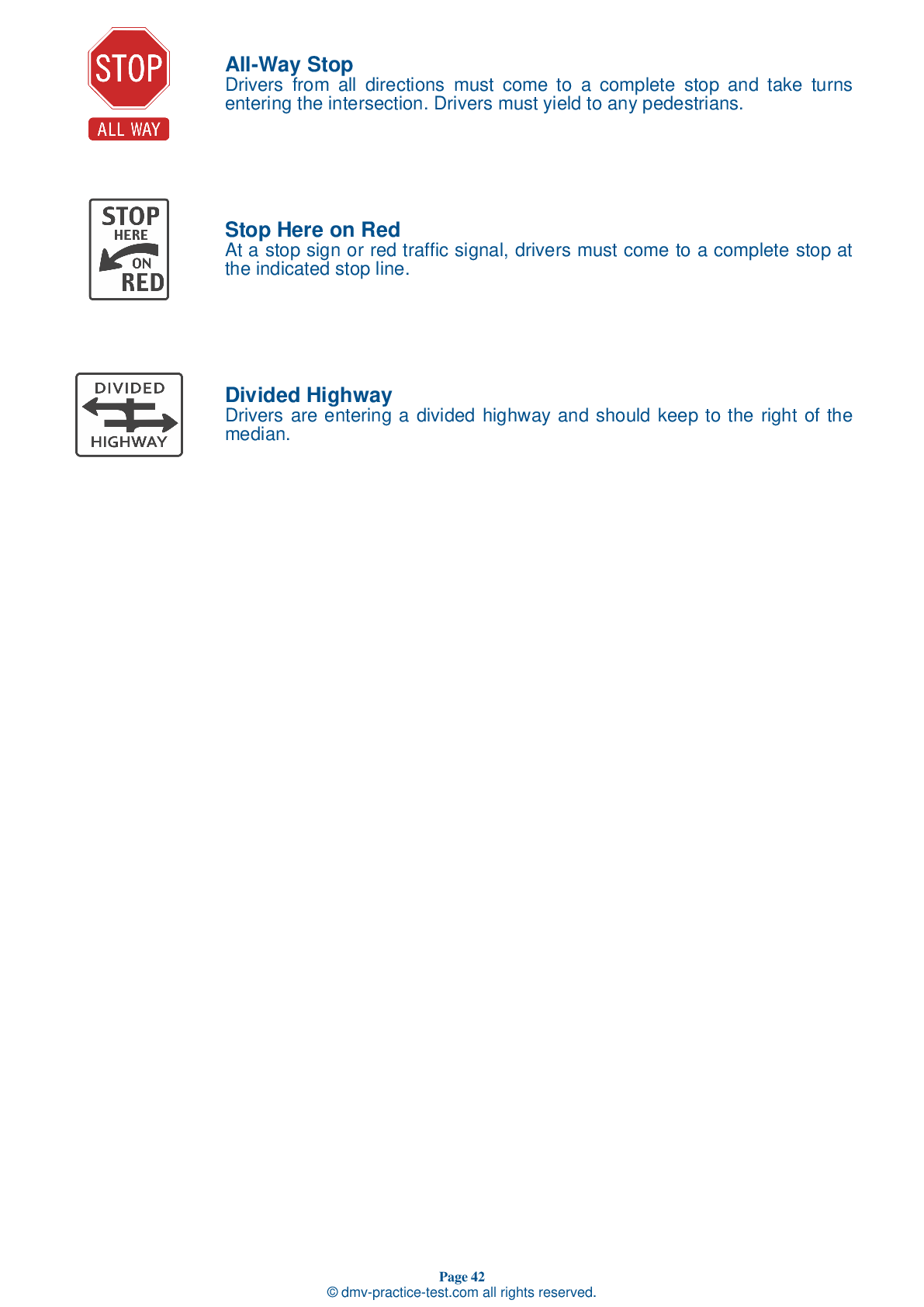Motorcycle Test | License CA 2025 | FREE Online Practice! #2 Page 4 of 4
Take this FREE motorcycle test (license in CA 2025) to check your knowledge of the road rules. To improve your results, download a motorcycle handbook online, study theory, and practice for free on our website. Still worried about how to get a motorcycle license in California in 2025? Check our website for more sample tests, train as much as possible, and boost your grades!
24 . If you have been drinking alcohol, you:
You should not ride a motorcycle if you are drinking or have been drinking. It may be unsafe to operate a motorcycle even if you are under the legal limit.
25 . When a motorcyclist needs to stop quickly, they should:
To stop quickly, apply both brakes at the same time. Scan the road ahead to help you avoid the need for last-minute stops.
26 . The first thing you should do if your throttle becomes stuck is:
If your throttle becomes stuck, try twisting it back and forth several times. If this does not free your throttle, immediately operate the engine cut-off switch and pull in the clutch at the same time.
27 . If your front wheel locks while you are stopping, you should:
If your front wheel locks while you are making a quick stop, release the front brake immediately and then re-apply it firmly. Use both the front and rear brakes if you need to stop quickly.
28 . When involved in a reportable collision, an operator must report the collision to the DMV within ____ days.
When involved in a reportable collision, an operator must report the collision to the DMV within 10 days. Any collision resulting in injury or $1,000 worth of damage must be reported.
29 . A motorcycle’s brake light is _________ a passenger vehicle’s brake light.
Your motorcycle’s brake light is usually not as noticeable as that of a larger vehicle, especially when the taillight is on. Be aware that surrounding drivers may not notice your brake light.
30 . This sign means you are approaching a railroad crossing that does not have a signal. You should:
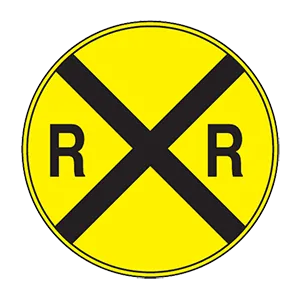
At a railroad crossing marked with this sign, a driver should look both ways, listen for any trains, and be prepared to stop if any trains are nearby. Never try to outdrive an oncoming train.
See the exact questions that will be on the 2025 California DMV exam.
99.2% of people who use the cheat sheet pass the FIRST TIME
Jeneen was tired of paying $5/gallon. She got herself a scooter that required the motorcycle license. She studyed the motorcycle test cheat sheet and passed her test the next day!
Christopher tells us how he knew nothing prior to obtaining the motorcycle study guide, and he only got one question wrong because he clicked on the wrong answer by mistake.
